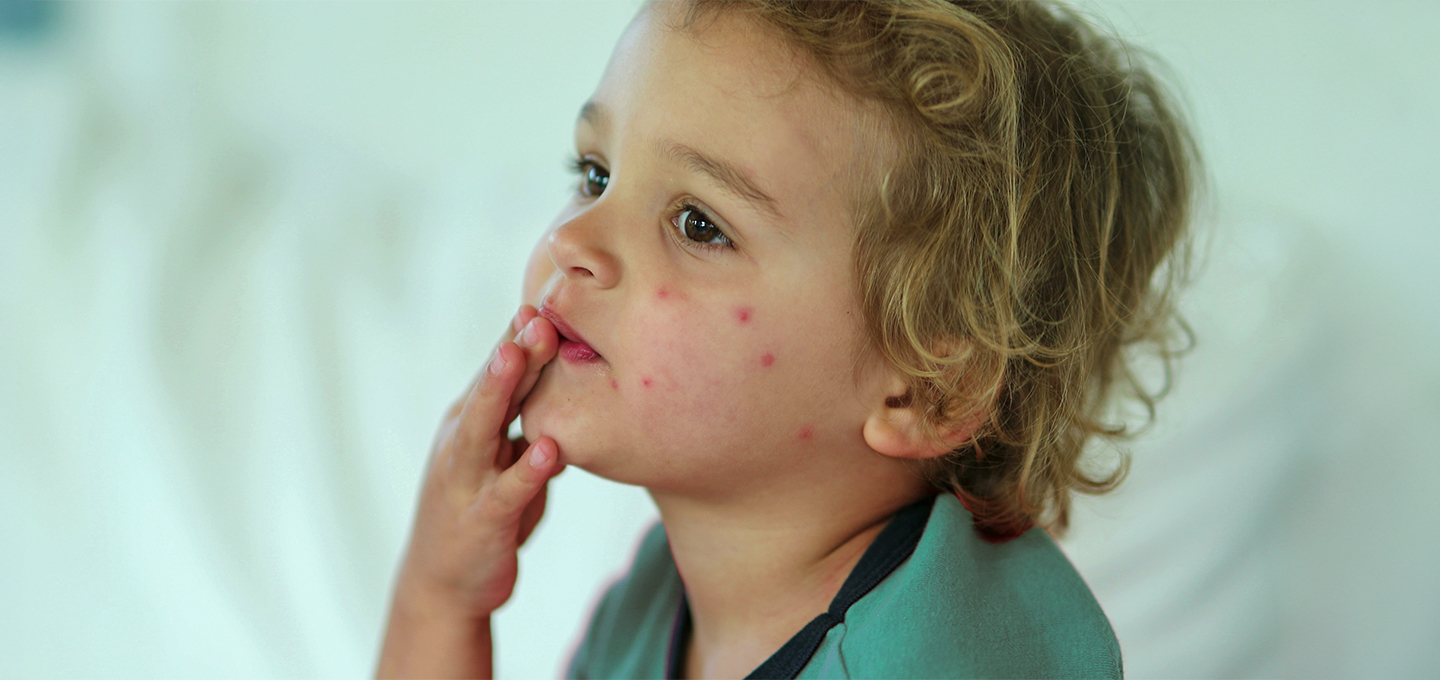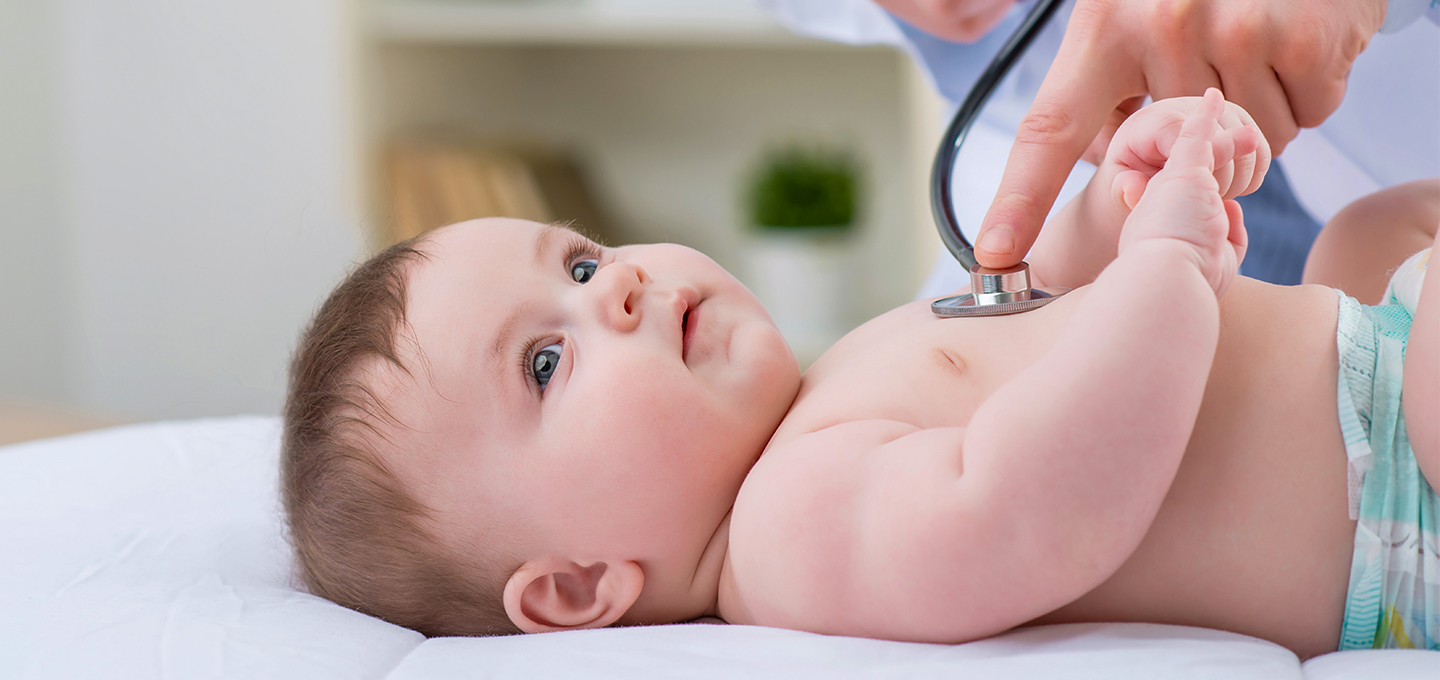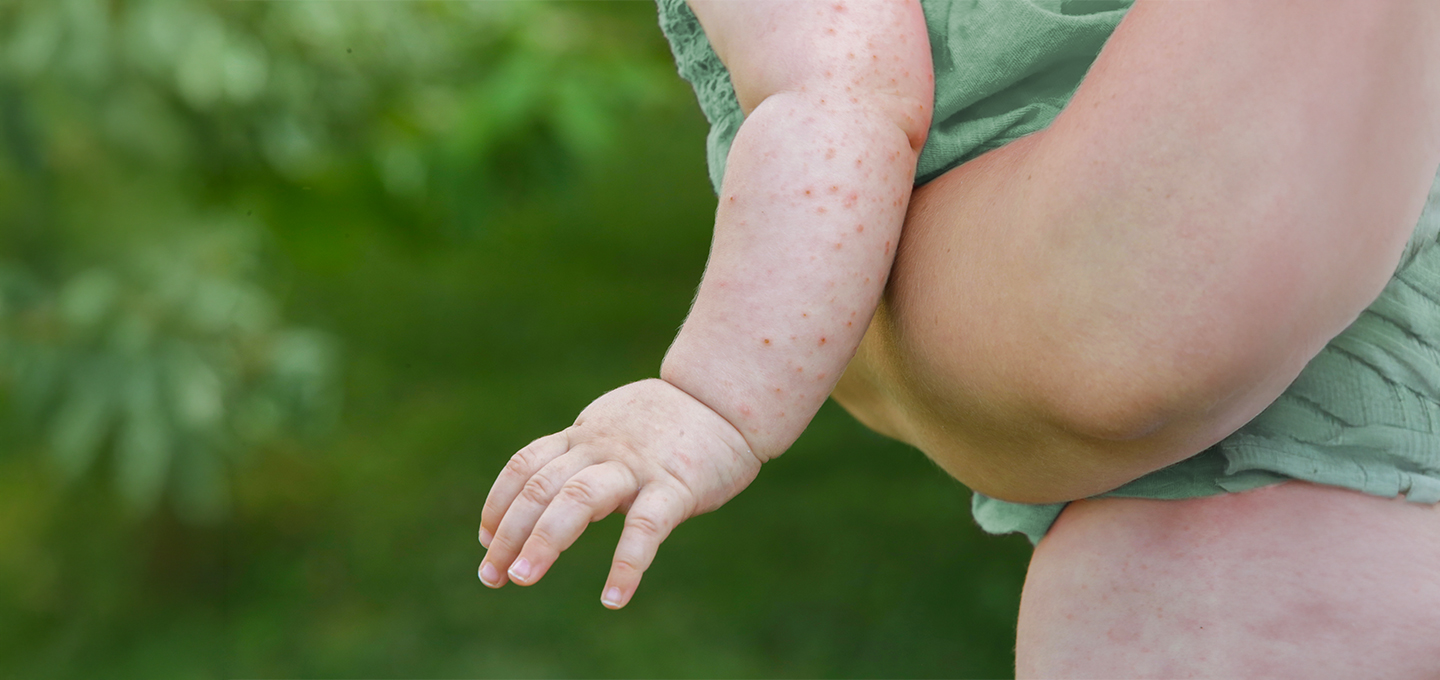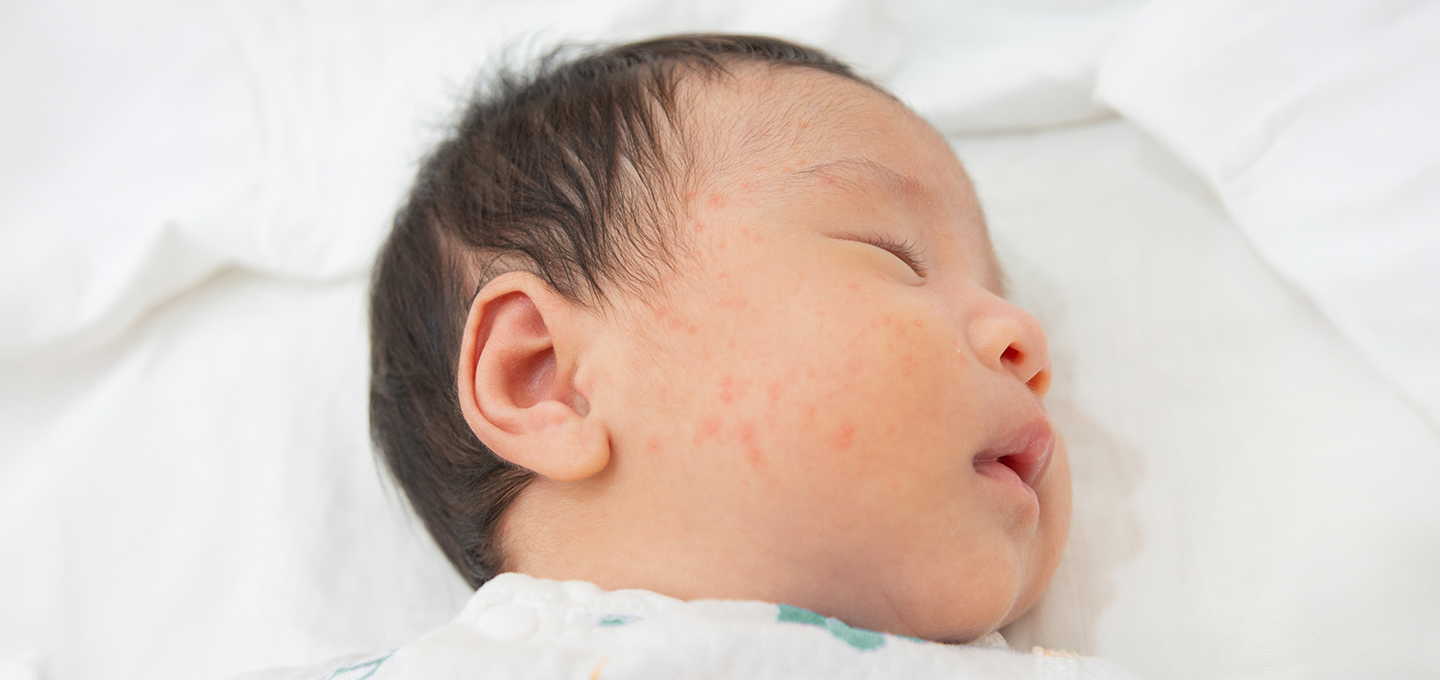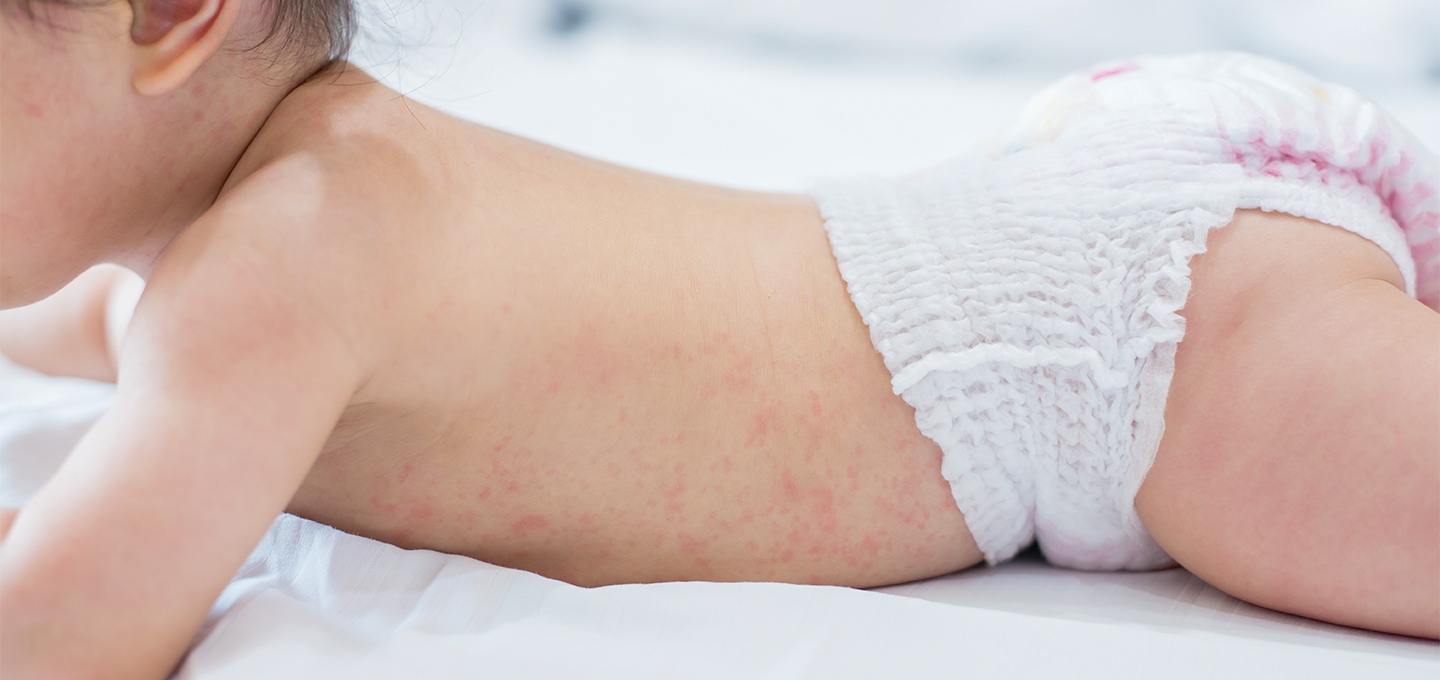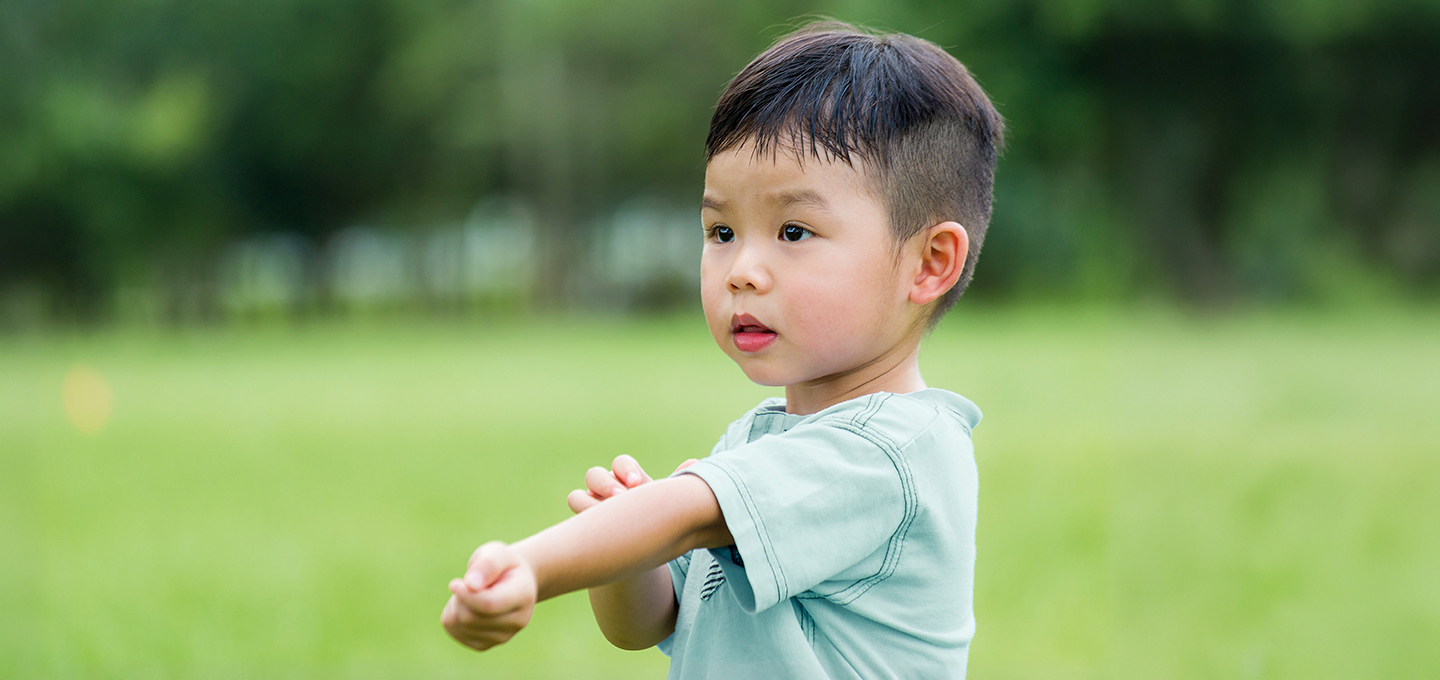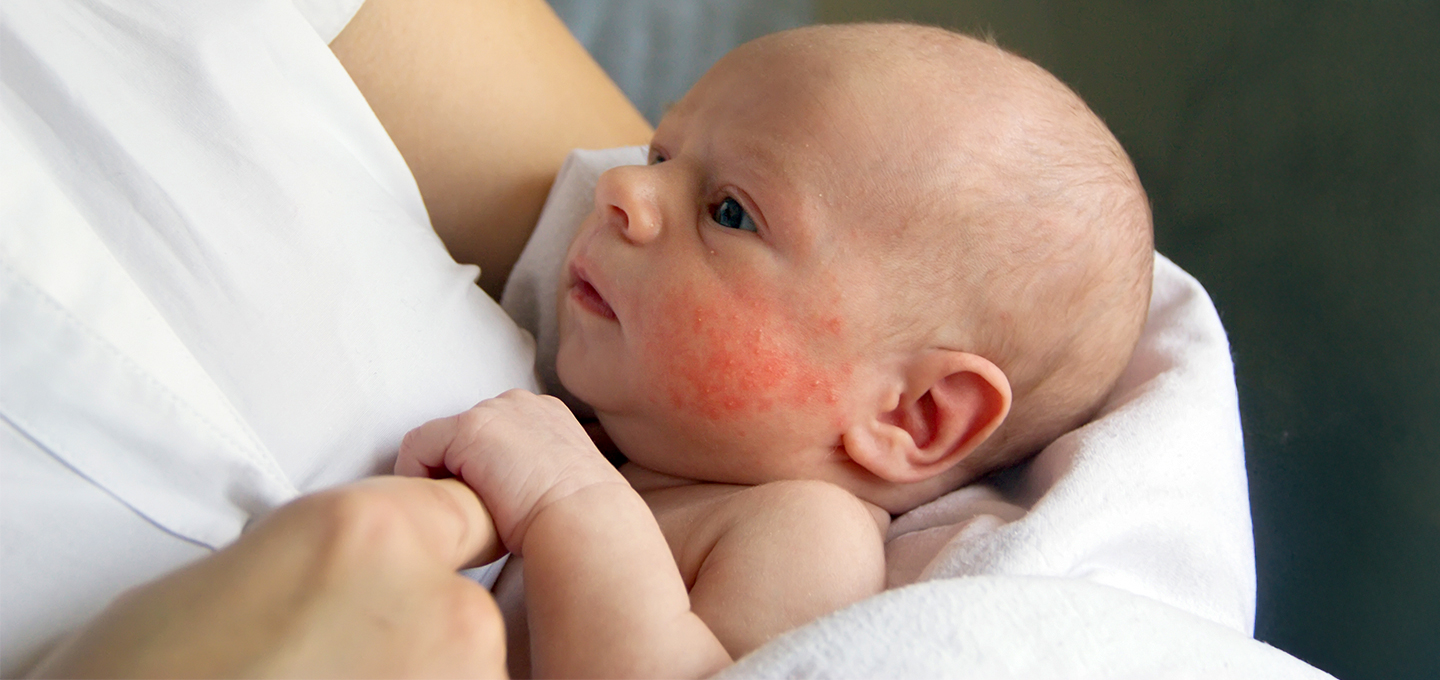
What to Do When Your Baby Has Eczema


As a parent, you may feel concerned if you see dry patches on your baby's skin or red patches. It may help to know that eczema is quite common in babies and often goes away with time. If your baby has been diagnosed with eczema, you’re probably wondering what it is, what’s caused it, and what you can do to treat it. Read on to find out all this and more!
What Is Baby Eczema?
Though it can occur at any age, eczema is a skin condition common in children—about 10 percent of children get it. It’s not contagious.
Eczema usually appears after your infant turns about 1 month old. Most children grow out of it between the ages of 2 and 3.
It’s not always known why the condition affects some people and not others; however, your infant might be more susceptible to eczema if certain conditions run in your family. These may include hay fever, asthma, food allergies, or environmental allergies.
Interestingly, about half of children with eczema develop hay fever or asthma in adulthood.
What Causes Eczema in Your Baby?
It's unclear why some people get eczema and others don't, though genetics plays a role. Allergies are also related to the condition.
There are also environmental irritants that affect some people more than others. When the skin comes into contact with an irritating substance, it becomes red and inflamed, leading to red dry patches on baby skin.
Here are some irritants that could cause eczema in babies:
Identifying Eczema on Your Baby’s Face and Body
With eczema, your baby’s skin will look dry and scaly or bumpy with red patches—which may appear as dry patches on baby skin. The condition usually starts on the face, especially the cheeks, forehead, or scalp.
In many cases, the rash goes away on the face before spreading to other areas, such as the bends of the elbows and the area behind the knees.
The patches caused by eczema can be mild and small, but they can also be extremely itchy, which could make your baby irritable. If this is the case with your little one, speak to your healthcare provider.
Keep in mind that eczema on your baby’s head might look a little like cradle cap, which is another skin condition that can affect some babies. Your healthcare provider will be able to diagnose the condition.
Two Types of Eczema Your Baby Could Have: Atopic Dermatitis or Contact Dermatitis
Atopic dermatitis is the type of eczema that runs in the family. Food allergies, hay fever, and environmental allergies may be related to flare-ups of atopic dermatitis.
Contact dermatitis occurs when an irritant or allergen comes into contact with your baby’s skin, causing an allergic reaction in the form of a rash—in other words, eczema.
When to See Your Healthcare Provider
It’s a good idea to see your provider if you think your little one might have eczema—that way, your provider can diagnose it and recommend treatment if needed.
If your baby’s eczema is severe—if it looks purple, crusty, or weepy or has blisters—your provider might prescribe an over-the-counter or prescription cream or ointment.
If your baby has only mild eczema, your provider might recommend no treatment at all and suggest waiting to see if it clears on its own.
How to Help Prevent Your Baby’s Eczema From Recurring
Always follow your healthcare provider’s advice on treating your baby's eczema.Your provider may suggest taking the following steps to help prevent eczema from recurring or getting worse:
FREQUENTLY ASKED QUESTIONS
Soothe your baby’s eczema by:
- bathing your baby no more than three times per week, using mild, unscented cleansers
- moisturizing your baby’s skin after bathtime with a fragrance-free cream or ointment such as petroleum jelly or one prescribed by your provider
- dressing your little one in soft clothing, avoiding wool or any rough woven fabrics
The Bottom Line
If your baby has eczema, it can look scary, but with care from your provider supplemented by effective at-home treatment, your little one’s skin should improve in time. In the meantime, keep showering your little one with lots of love and kisses.
To earn rewards for all your Pampers purchases, including diapers and wipes, download the Pampers Rewards app today.
- American Academy of Pediatrics. Caring for Your Baby and Young Child: Birth to Age 5, 6th ed. (New York: Bantam Books, 2014).
- Kids Health. “Eczema.”
- Mayo Clinic. “Baby Eczema.”
Read more about Baby
Related Articles
Join a World of Support
through Pregnancy and Parenthood.
TRACK WITH TOOLS
LEARN WITH EXPERTS
GET REWARDED
